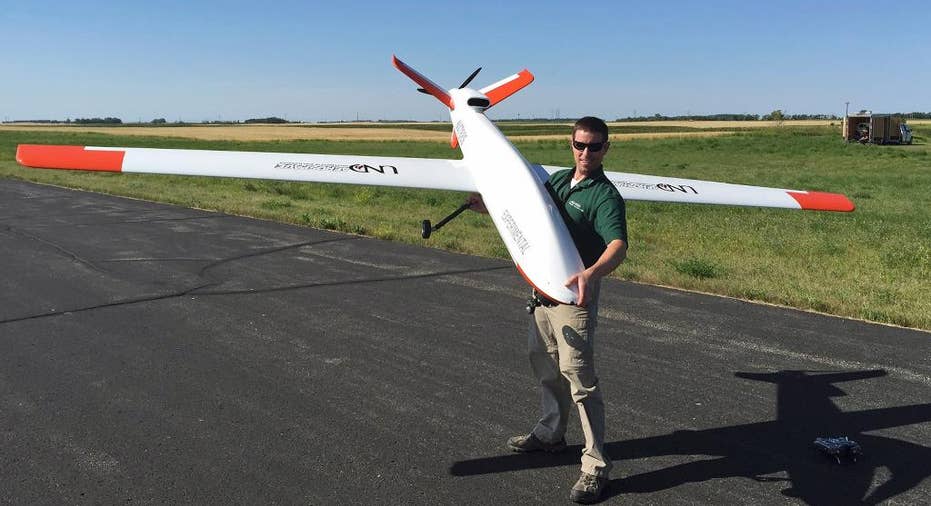Landmark landing: University of North Dakota pilots fly drone into general aviation airport

The University of North Dakota aviation program notched a milestone earlier this month when three pilots from the school navigated an unmanned aircraft at a public airport.
The test at a remote airfield near Lakota, in northeastern North Dakota, is part of a project that will test radio systems on the drone. Although there was limited air traffic in the area, school officials said the inaugural flight provided a good lesson in communications.
"You still broadcast radio calls like people are listening at all times," said Andrew Regenhard, a UND aviation researcher who supervised the flight. "It's a milestone and also a steppingstone to more eventful tests down the road. It's kind of cool to be part of the first one."
The project is being conducted through the Northern Plains UAS Test Site, one of six federally funded sites in the United States. The site is working with the Federal Aviation Administration to create rules to safely integrate unmanned aircraft into commercial airspace.
"Because all of our pilots have licenses and experience with manned flights, being able to operate in and out of an airport helps to bridge that gap between the man and unmanned community," said Mark Hastings, director of operations for the test site. "Being able to do it the right way and act like any other airplane in the sky, that's important to us."
UND drone pilots have trained extensively on simulators, but Regenhard said the actual flight at a general aviation airport had "finer aspects" that can't be duplicated in a classroom.
"We need to share the message and we need to get the word out that it can be done safely and this is how we're doing it," Regenhard said.
The radio that will be tested is manufactured by Rockwell Collins of Cedar Rapids, Iowa. It's a little bigger than a deck of cards and has a range of at least 90 miles, said project manager Doug Olsen.
"We're going to be testing the range of the radio and how it does under poor conditions to make sure that it maintains a link," Olsen said. "We want to see what the radio capabilities are beyond line of sight (of the pilots)."